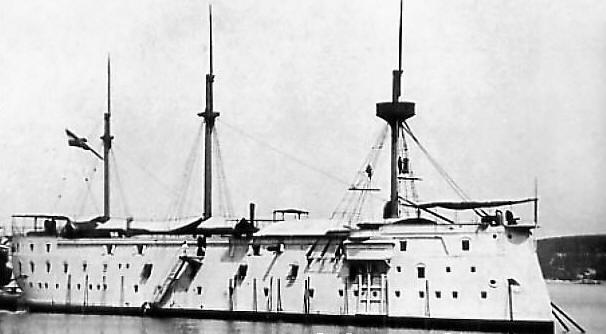
The previous Herzherzog Ferdinand Max in 1900, former famous Ironclad distinguished at the battle of Lissa in 1865.
KuK battleships still on budget…
As soon at they were allowed larger budgets, the Admiralty shipbuildings’s director Friedrich Popper was found ready to develop a series of three ships that were significantly larger than the Habsburgs. Unfortunately, Popper still was limited in its choices because of the narrow construction shapes of STT, the only major shipbuilder on the coast, and its own budgets did not allowed to expand facilities.
As a result, these three units, heavier by 2,000 tons to the previous Habsburg, were still very compact, and therefore well protected. But their artillery was limited again, to 40-caliber Krupp 240 mm cannons, considered sub-standard by the time (or armoured cruiser level).
The three Herzerzogs (“archduke”) were thus once more, even with the benefit of an extra gun, – which was the least given their increase in tonnage – still lower than their counterparts from other nations. The class was therefore, again, outclassed, outranged and outgunned.
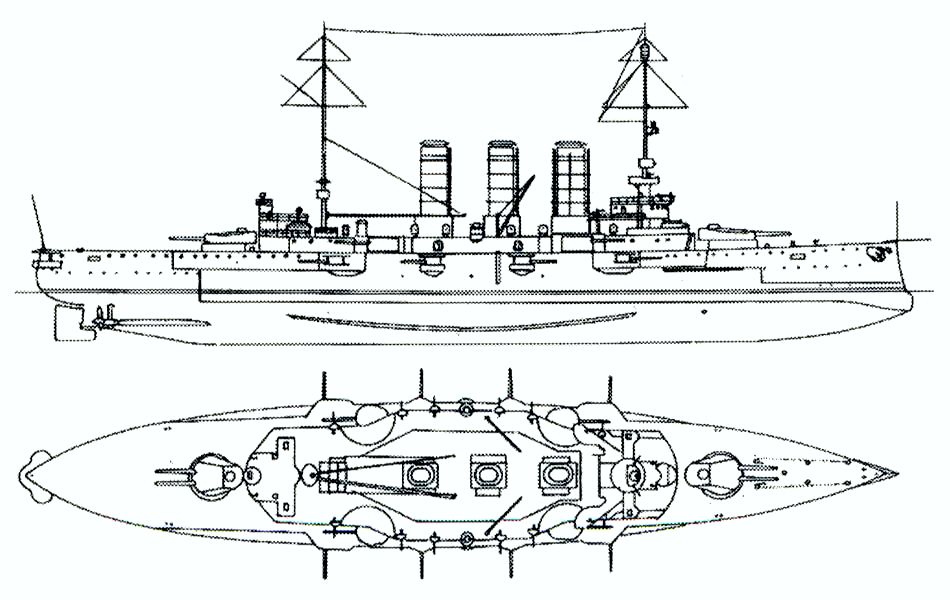
Their armor was weaker at the central section of the belt, on the turrets, the casemates, but it was still higher than the decks and command tower thickness. However, the available space below the waterline (7.51 m draft) authorized the installation of compact yet powerful machines, allowing these “archdukes” to reach 20.5 knots, better than most battleships of her time. This allow them to act a bit like armoured cruisers. Fighting cruisers of all tonnage and fleeing battleships.
Their secondary armament, on the other hand, was much more powerful than on the Habsburgs, as these ships went from 12 x 6 in (152 mm) guns to 12 x 7.5 in (190 mm), which well their main 240 mm battery. The caliber was still sufficiently different to be able to tell the difference seeing their repective waterplumes through the rangefinders and adjust the shot accordingly.
The secondary armament, also from Škoda, were mounted in eight single casemates on each side and two twin turrets, they had a 20,000 metres (22,000 yd) range and a muzzle velocity of 800 mps (2,600 ft/s) and a three rpm rate of fire.
Once again, their tertiary armament was emblematic of pre-dreadnoughts, with 70 mm Škoda guns (3 in), 47 mm Vickers QF guns declined in 33 and 44 caliber, 37 mm Vickers AA revolver guns and 8 mm Skoda machine guns. All this arsenal was devoted to fighting torpedo boats. In 1916, three Škoda 70-millimeter anti-aircraft guns were added to all ships, replacing the previous Vickers models that dated back from 1910. The torpedo tubes were also sub-standatd at 450 mm (457 or even 533 mm were more frequent) and rarely used. They were fitted above the waterline, on either side.
Career
The three battleships formed together the 3rd line division, making some sorties of coastal bombardment after the declaration of war, but the occurrence of a bad encounter with the allied fleet in the Adriatic forced them to stay idle at Pola harbour for most of the war. At the time of Italy’s declaration of war on May 23, 1915, the three Herzerzogs went out together with the rest of the fleet to carry out a massive shelling of the Italian coast. The ardmiralty however renounced the suicidal attempt to send them to the Dardanelles to support the Turks. Albeit inactive until the capitulation, they were kept always ready, and so were never send in drydock for some bottom-scrapping. Captured by the Yugoslavs, they became, as a result of the peace treaty, war damage compensation to UK which when seeing their poor state immediately resold them to Italian shipbeakers in 1920.
Herzherzog Ferdinand Max
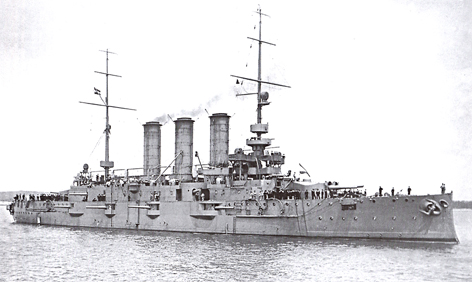
At the outbreak of World War I, Erzherzog Ferdinand Max was in the 3rd division of the Austrian-Hungarian battle-line fleet as said above, mobilized at the eve of the war to support the SMS Goeben and SMS Breslau fleeing through the Mediterranean. When the Austrian ships passed Brindisi they were recalled. Erzherzog Ferdinand Max shelled Ancona (24 May 1915) on Italian gun-batteries and the harbour.
A mutiny erupted on 1 February 1918 in Cattaro, which included the crews of Sankt Georg and Kaiser Karl VI. Two days later the Herzherzog squadron arrived to suppress the mutiny.
The rebellious ships were later decommissioned, their crews jailed, and the squadron took their place. On 11 June, Admiral Miklos Horthy planned a a massive push on the Otranto Barrage with the three Herzherzog plus the four Tegetthoffs and Novara-class cruisers however the previous night, on 10 June, Szent István en route to Cattaro was torpedoed and sunk by Italian MAS and Horthy called off the whole operation.
At the end of the war, SMS Erzherzog Karl-class battleships was handed over to the newly formed State of Slovenes, Croats and Serbs before her transfer to Great Britain as war reparation, resold and scrapped in 1921.
Herzherzog Karl
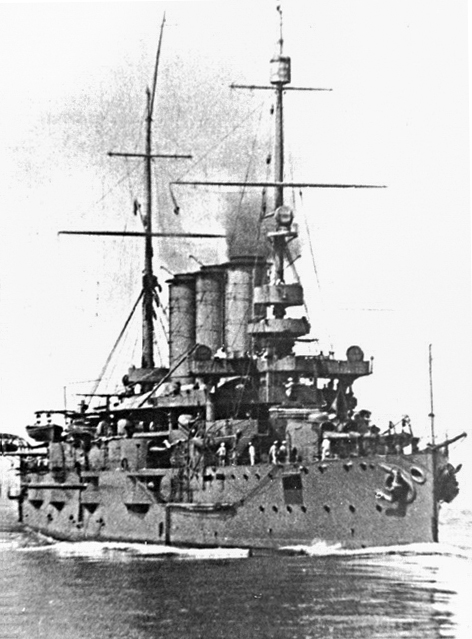
After assisting the flight of SMS Goeben and SMS Breslau, SMS Hrz. Karl took part in the shelling of Ancona, shelling about 24 rounds of 240 mm AP shells at signal and semaphore stations and 74 smaller rounds to gun-batteries and infrastructures.
After the mutiny of Cattaro (see above), she was posted permanently there after helping quelling the mutineers. She was inactive although mobilized for a main sortie planned against Otranto barrage, cancelled after one dreadnought was sunk during the preceding night by MTBs.
She spent the rest of the war at Pola (Pula), protected by heavy nettings. After being taken over by the Yugoslavs she was ceded to France as war reparation but ran aground at Bizerte en route to Toulon and was broken up in situ after she it was found impossble to tow her.
Herzherzog Friedrich
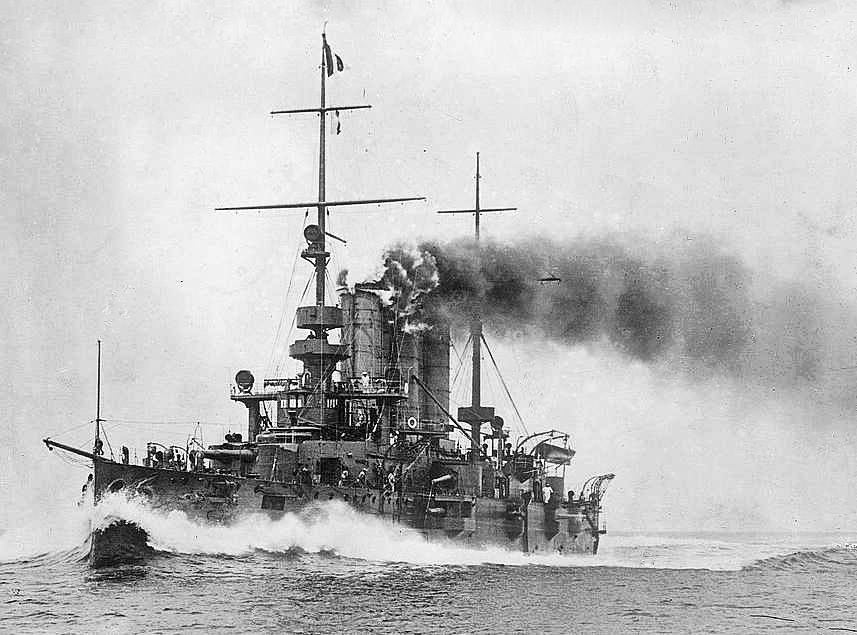
Also part of the 3rd division of the Austrian-Hungarian battlefleet she also sailed to assist SMS Goeben and SMS Breslau past brindisi and went back. She also took part in the bombardment of Ancona and was later sent to Cattaro to quel a mutiny and was based there until june 1918 when it was plan to send her unit to Otranto; but this was never to be and the ship sat idle at Pola for the remainder of the war. Ceded as a war reparation to France in 1920, she was scrapped in 1921.
Herzerzog Ferdinand class specifications |
|
| Dimensions | 126,2 x 21,8 x 7,5 m () |
| Displacement | 10472T standard (10,640 long tons) |
| Crew | 700 |
| Propulsion | 2 shafts 2 VTE 4 cyl., 16 Belleville boilers, 18,000 ihp |
| Speed | 20.5 knots (38.0 km/h; 23.6 mph) – 20.7 trials |
| Armament | 4 x 240mm/40 (9.4 in), 12 x 190mm/42 (7.5 in), 12 x 70mm/45 SFK (2.8 in), 6 x 47mm/44/33 (1.9in), 4 x 37mm (1.5 in), 4 x8mm (0.3 in) MGs, 2 x 450 mm TTs (17.7 in) |
| Armour | Waterline Belt 220 (8.3 in), turrets 240 (9.4 in), casemates 210 (5.9 in), decks 55 (2.2 in), Conning Tower 220 mm (8.7 in), bulkheads 200mm (7.9 in) |

Author’s illustration of the Herzherzog Karl in 1915
Src/ Read More
Erzherzog_Karl-class on Wikipedia
modelshipgallery Erzherzog Ferdinand Max Model by Martin Deuretsbacher
russiannavy.net – Various photos of the KuK Marine
kuk-marine-museum.net
On fr.naval-encyclopedia.com
Conway’s all the world’s fighting ships 1860-1905


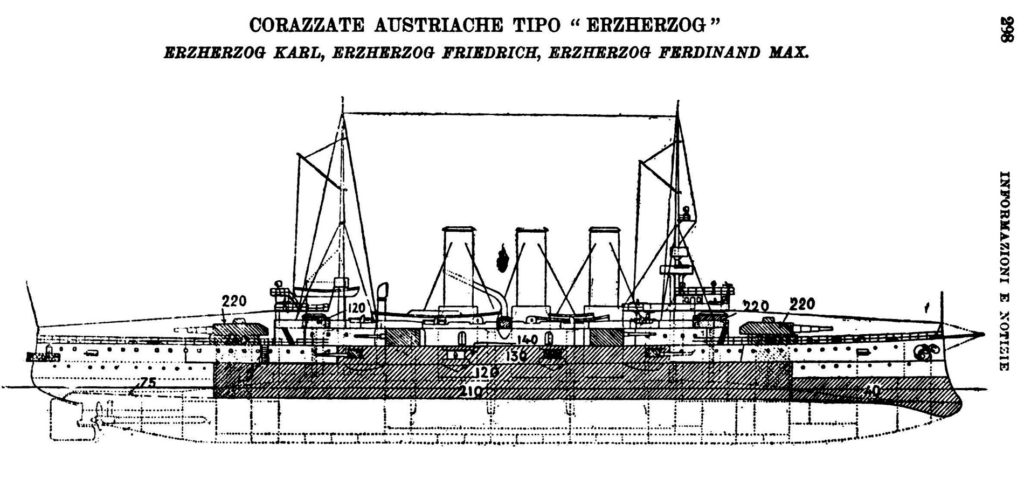
 Latest Facebook Entry -
Latest Facebook Entry -  X(Tweeter) Naval Encyclopedia's deck archive
X(Tweeter) Naval Encyclopedia's deck archive Instagram (@navalencyc)
Instagram (@navalencyc)





 French Navy
French Navy Royal Navy
Royal Navy Russian Navy
Russian Navy Armada Espanola
Armada Espanola Austrian Navy
Austrian Navy K.u.K. Kriegsmarine
K.u.K. Kriegsmarine Dansk Marine
Dansk Marine Nautiko Hellenon
Nautiko Hellenon Koninklije Marine 1870
Koninklije Marine 1870 Marinha do Brasil
Marinha do Brasil Osmanlı Donanması
Osmanlı Donanması Marina Do Peru
Marina Do Peru Marinha do Portugal
Marinha do Portugal Regia Marina 1870
Regia Marina 1870 Nihhon Kaigun 1870
Nihhon Kaigun 1870 Preußische Marine 1870
Preußische Marine 1870 Russkiy Flot 1870
Russkiy Flot 1870 Svenska marinen
Svenska marinen Søværnet
Søværnet Union Navy
Union Navy Confederate Navy
Confederate Navy Armada de Argentina
Armada de Argentina Imperial Chinese Navy
Imperial Chinese Navy Marinha do Portugal
Marinha do Portugal Mexico
Mexico Kaiserliche Marine
Kaiserliche Marine 1898 US Navy
1898 US Navy Sovietskiy Flot
Sovietskiy Flot Royal Canadian Navy
Royal Canadian Navy Royal Australian Navy
Royal Australian Navy RNZN Fleet
RNZN Fleet Chinese Navy 1937
Chinese Navy 1937 Kriegsmarine
Kriegsmarine Chilean Navy
Chilean Navy Danish Navy
Danish Navy Finnish Navy
Finnish Navy Hellenic Navy
Hellenic Navy Polish Navy
Polish Navy Romanian Navy
Romanian Navy Turkish Navy
Turkish Navy Royal Yugoslav Navy
Royal Yugoslav Navy Royal Thai Navy
Royal Thai Navy Minor Navies
Minor Navies Albania
Albania Austria
Austria Belgium
Belgium Columbia
Columbia Costa Rica
Costa Rica Cuba
Cuba Czechoslovakia
Czechoslovakia Dominican Republic
Dominican Republic Haiti
Haiti Hungary
Hungary Honduras
Honduras Estonia
Estonia Iceland
Iceland Eire
Eire Equador
Equador Iran
Iran Iraq
Iraq Latvia
Latvia Liberia
Liberia Lithuania
Lithuania Mandchukuo
Mandchukuo Morocco
Morocco Nicaragua
Nicaragua Persia
Persia San Salvador
San Salvador Sarawak
Sarawak Uruguay
Uruguay Venezuela
Venezuela Zanzibar
Zanzibar Warsaw Pact Navies
Warsaw Pact Navies Bulgaria
Bulgaria Hungary
Hungary

 Bundesmarine
Bundesmarine Dutch Navy
Dutch Navy Hellenic Navy
Hellenic Navy Marina Militare
Marina Militare Yugoslav Navy
Yugoslav Navy Chinese Navy
Chinese Navy Indian Navy
Indian Navy Indonesian Navy
Indonesian Navy JMSDF
JMSDF North Korean Navy
North Korean Navy Pakistani Navy
Pakistani Navy Philippines Navy
Philippines Navy ROKN
ROKN Rep. of Singapore Navy
Rep. of Singapore Navy Taiwanese Navy
Taiwanese Navy IDF Navy
IDF Navy Saudi Navy
Saudi Navy Royal New Zealand Navy
Royal New Zealand Navy Egyptian Navy
Egyptian Navy South African Navy
South African Navy






























 Ukrainian Navy
Ukrainian Navy dbodesign
dbodesign